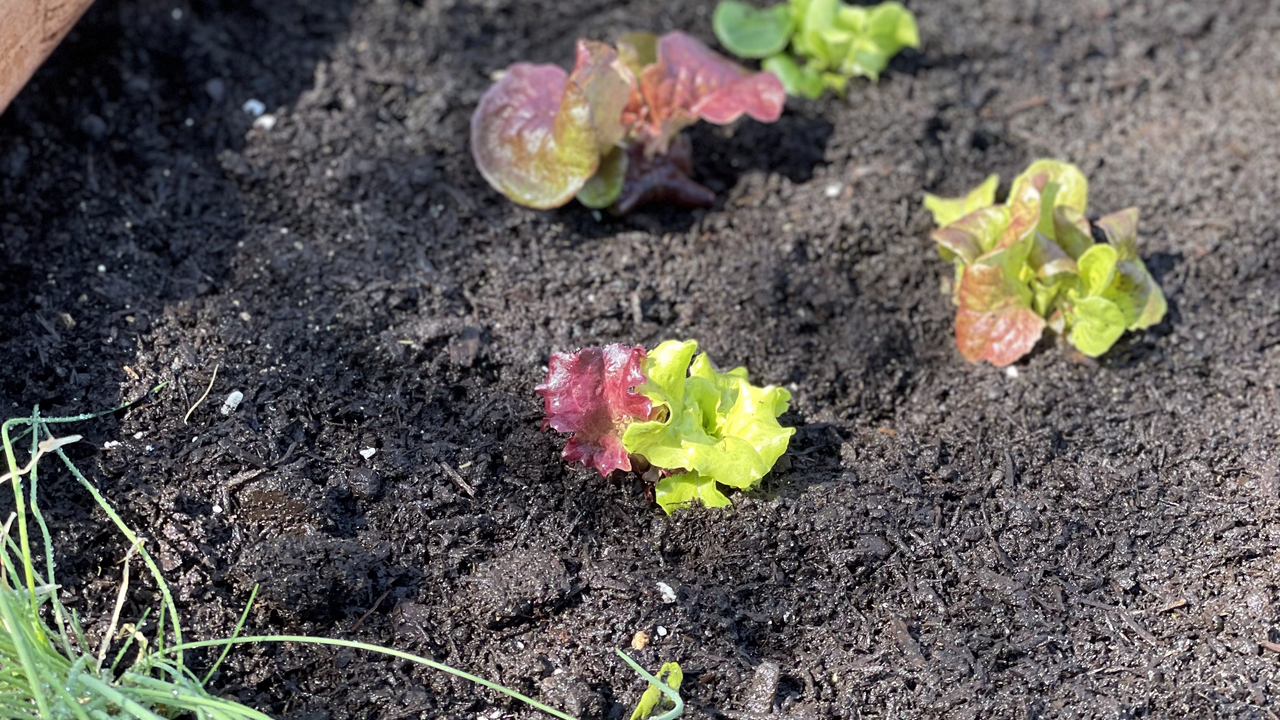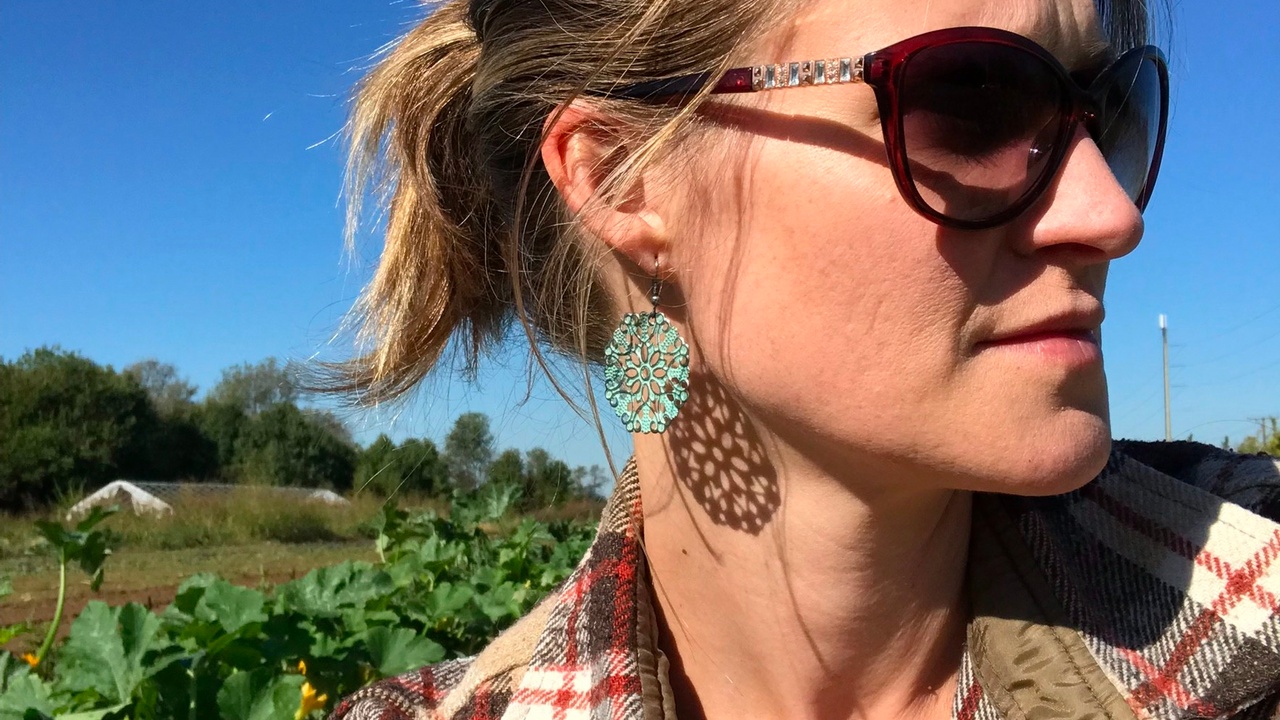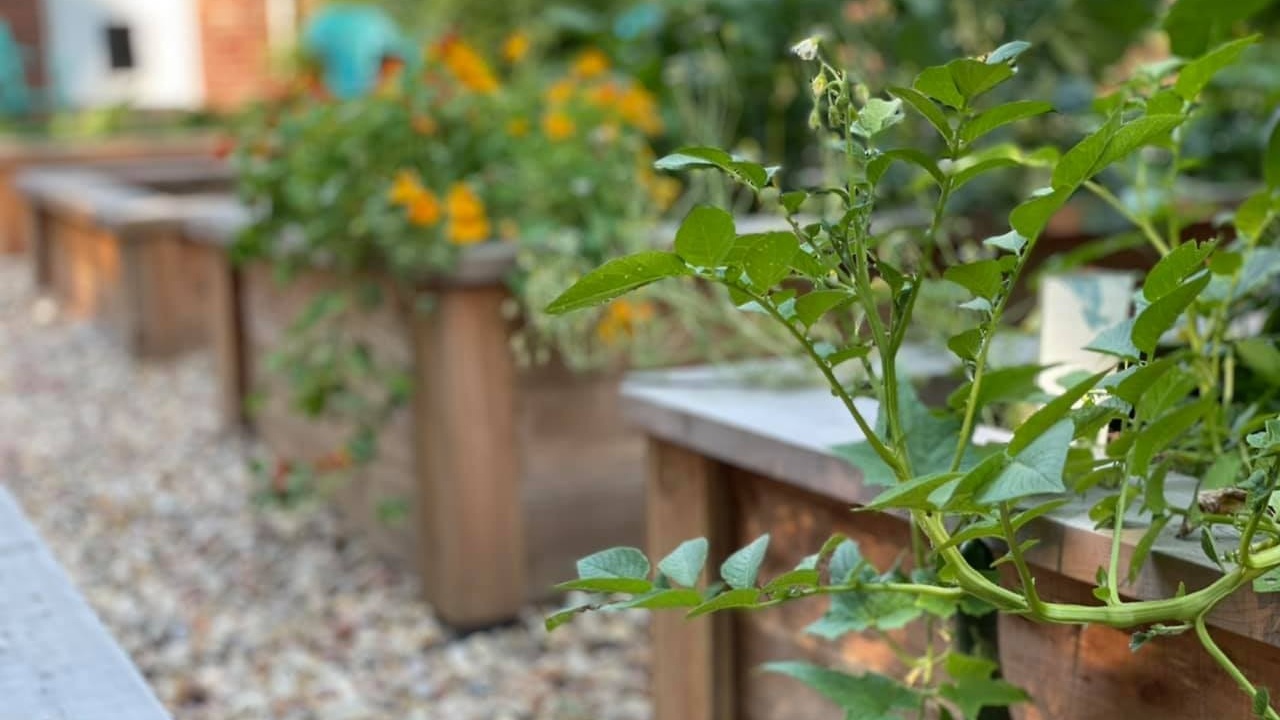Overcoming the Overwhelm Kara Mills' Journey

Our vision at Edible Gardens Inc. is to inspire edible gardens for every space. We work to achieve that mission everyday by helping home gardeners wherever they are at in their journeys! We will install a garden from scratch or help you better care for the garden you have through classes and mentorship or give you the tools to DIY your own garden!
We know from personal experience and scientific evidence that gardening provides substantial benefits to human health. A recent study in 2017 showed that home gardening is linked to better social, and emotional health in young children as well as reduction in behavioral difficulties (Richardson et al., 2017). Another study showed the connection between home vegetable gardening and reductions in depression, stress and an increase in ability to handle stress, overall it increased the physical and mental well-being of adults (Machida, 2019; Peeters et al., 2014). Having a garden in your own yard creates a space for you to connect with nature a...
What is the Arc of the Seasons?

The Arc of the Seasons in the secret to gardening success and making the most of your home garden. Vegetable and fruit crops are sensitive to temperature and changes in temperature so as a gardener you must be aware of how the seasons change. Unless you live at the equator or the arctic everyone has an arc to their year it starts at the coolest point and then gradually increases in temperature to the warmest point in the year. We don’t like to use months because depending on where you are December could be one of your coldest or warmest months and the seasons like spring, summer, fall, and winter are too general. Instead, we divide the seasons into cold, cool, warm, and hot. You can see on the diagram below how the seasons recur over and over in a repeating arc, hence the name Arc of the Seasons!

You can also see in the above diagram how we divide the seasons using temperature to distinguish between them. It is vital to know the difference between the cold season, cool season, warm...
3 Reasons Why Fresh is Best

It is a universal truth that fresh fruits and veggies are a staple in a well-rounded healthy diet. Fresh veggies dipped in some hummus or fresh fruit on top of yogurt are my favorite snacks. They give you that pick me up midafternoon and satisfy my need for crunch without having to reach for the chips or my need for sweet without reaching for the leftover easter chocolate (which let’s face it I really should have thrown out by now). That being said, not all “fresh” is equal, the “fresh” I get from the fresh produce aisle at the market is not equal to the fresh produce I harvest from my garden. There are multiple reasons store bought is not equal to locally grown and we discuss some of them in our blog post “Is Eating Local Really Important?” but today we will focus on the “fresh” in Fresh produce, the difference at a nutritional level.
Fresh is defined as “recently made or obtained; not canned, frozen, or otherwise preserved” it is synopsis to newly harvested so can this term really ...
Harvesting in the Cool Season
If you have been planting with the seasons than you have been working hard the past weeks to tend your cool weather plants. I want to make sure you do not let all that hard work and your beautiful fresh produce go to waste. Remember if you plant with the seasons, you also harvest with the seasons! In Kentucky, where Edible Gardens Inc. is headquartered, the cool season is coming to a rapid end as a warm front has moved in, and the hot season will soon be upon us! So, as you go into your gardens be checking your lettuce, radishes and herbs for what we call bolting and harvest what you have following the instructions in the video above!
Is Eating Local Really Important?

The simple answer to this question is absolutely, eating locally produced food is healthier for you, your family, and the environment. When you think of eating locally you probably think growing in your back yard or a farmers’ market and you’re not wrong those are my favorite ways to stay local! Going to a farmers’ market and discussing the variety of squash with the grower themselves and asking how they manage their farm is healthy, informative, and social. That being said, there is more to eating local than just farmers markets and home gardens.
Before you go any further, I want to define what I mean by eating local food because you may not know but there is no universally accepted definition for “local” produce. Local is defined by the Food, Conservation and Energy Act of 2008 as 400 miles away or within your state. That definition isn’t good enough for me, I would like to add that local also means responsibly produced. For a grower to truly be local in my book they must be withi...
10 Biggest Mistakes People Make When Starting Their Gardens in the Spring

Here are the ten common mistakes we want to help you avoid this spring so that you can start your garden off right this year, and you'll see the benefits all season long!
Number 1: Forgetting to tend to your soil
You must take care of your garden's base before you can even think about growing plants. That's why getting a soil test, making amendments, and adding fertilizer is so important! If the plants don’t have good soil to grow in you’ll be disappointed and can get frustrated by the lack of growth and progress. Before planting we like to add a plant or animal-based fertilizer like Fertrell brand - or anything organic. It’s a great granular fertilizer that allows the plant to take up the nutrients when it needs them! Whatever fertilizer you choose, it is important that it contains nutrients like nitrogen, phosphorus, and potassium. When adding your fertilizer make sure that the soil isn’t too wet. Spring is a rainy time so be patient and wait till your soil has dried out a bit on...
Become the Gardener You've Always Wanted To Be
Home gardens ease food shortage concerns

Garden Bed Restoration
Amy is my neighbor, client, and new to gardening. This year she tried tomatoes, cucumbers, basil, calendula, peppers, lettuces, green beans, and a few others. Tomatoes and cucumbers can be difficult plants for a beginner. They need to be in the soil longer, need more space, more sun, and more maintenance than others.
Her garden space is limited to an 8x2.5x2 bed. We interplanted her bed to grow in underutilized spaces to maximize her harvests. Her summer plants got huge which got a bit messy. Next year we will redesign her layout to avoid overcrowding, but overall a great first season!
This is her garden box. It's built with untreated Eastern Red Cedar, which is prone to lose its pinkish, purple color rapidly the first season. The sides facing the sun were silver, while the sides facing away from the sun were more orangish pink. Watch how quickly the pink & purple color returns with a bit of sanding and a coat of wood sealant!
Cedar Bed Restoration is a service we offe...
Fall Garden Planning


